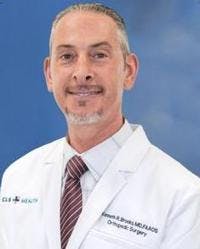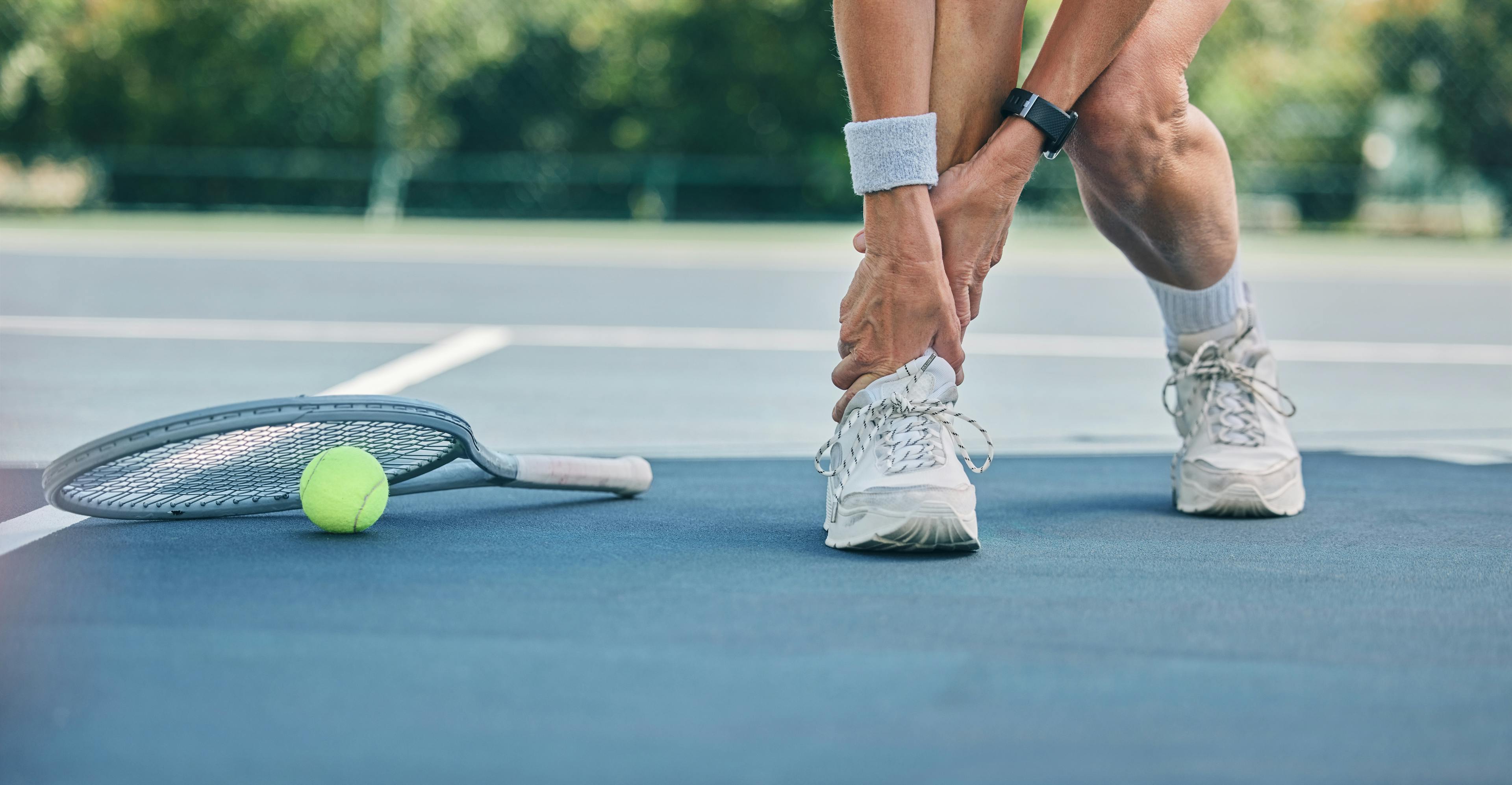Rotator cuff injuries are one of the most common causes of shoulder pain and limited movement. Whether your pain started gradually from repetitive overhead activity, appeared after a sports injury, or has worsened with age, it can affect everything from getting dressed to sleeping comfortably.
At CLS Health, our orthopedic specialists diagnose and treat rotator cuff problems using advanced imaging, personalized physical therapy, and when needed, regenerative treatments or surgery. Our goal is to reduce pain, restore function, and help you get back to the activities you enjoy.
Understanding the Rotator Cuff
What Is the Rotator Cuff?

The rotator cuff is a group of four muscles and their tendons that surround the shoulder joint. These tendons help:
- Stabilize the shoulder joint so the ball of your upper arm bone stays centered in the socket
- Lift and rotate the arm, such as reaching overhead, throwing, or fastening a seat belt
- Control arm movement, allowing smooth and coordinated motion
When these tendons become irritated, inflamed, or torn, you may experience pain, weakness, or a “catching” sensation in your shoulder.
Common Causes of Rotator Cuff Pain
Rotator cuff pain can develop suddenly or slowly over time. Common causes include:
Overuse from repetitive arm motion
- Overhead sports like tennis, baseball, or swimming
- Jobs that involve lifting, reaching, or working above shoulder level
- Repetitive home or yard work
Age-related wear and tear
- Natural degeneration of the tendons over many years
- More common in adults over 40
Traumatic injury
- Falling on an outstretched arm
- Lifting something heavy suddenly
- Direct blow to the shoulder
Rotator Cuff Tendinitis vs. Tears
Not all rotator cuff pain is caused by a tear. Two common conditions are:
Tendinitis
- Inflammation or irritation of the rotator cuff tendons
- Often due to overuse or repetitive movements
- Pain is usually worse with activity and may improve with rest and treatment
Rotator Cuff Tear
- A partial tear means some of the tendon fibers are damaged
- A complete tear means the tendon has fully separated from the bone
- Can result from a sudden injury or develop gradually from long-term wear
Because symptoms can overlap, it’s not always easy to tell the difference on your own. Early diagnosis is important to prevent further tendon damage, reduce chronic pain and stiffness, and improve your chances of successful nonsurgical or surgical treatment.
Symptoms & Diagnosis
Signs of a Rotator Cuff Injury
You may have a rotator cuff problem if you notice:
Shoulder pain that worsens with movement or at night
- Pain when reaching overhead, behind your back, or lifting objects
- Discomfort that makes it hard to sleep on the affected side
Weakness when lifting or rotating the arm
- Difficulty lifting a gallon of milk, raising your arm, or throwing
- Trouble reaching for items on a shelf or combing your hair
If these symptoms last more than a few days or interfere with daily activities, it’s time to be evaluated.
How Rotator Cuff Injuries Are Diagnosed
Our orthopedic specialists use a combination of your medical history, exams, and imaging to pinpoint the cause of your shoulder pain. This may include:
Your history
- To evaluate the cause of your rotator cuff symptoms
- To understand your activity level, daily demands, and long-term goals
Physical examination and movement tests
- Checking your range of motion, strength, and areas of tenderness
- Clinical tests such as drop-arm or impingement tests help confirm the diagnosis.
Imaging tests
- X-rays to evaluate the bones and rule out arthritis or bone spurs
- Ultrasound to visualize the tendons in motion
- MRI to provide detailed images of the rotator cuff muscles and tendons, and identify partial or complete tears
Specialized rotator cuff injury tests
Clinical tests such as the drop-arm or impingement tests help confirm the diagnosis
This thorough approach allows us to create a tailored treatment plan based on severity and type of injury.
Treatment Options for Rotator Cuff Injuries
Treatment depends on the cause, severity, and how long you’ve had symptoms. Many patients improve with nonsurgical care, while others may need regenerative therapies or surgery.
Conservative & Non-Surgical Care
For many rotator cuff injuries, we begin with conservative options, which may include:
Rest and activity modification
- Avoiding painful overhead movements or heavy lifting
- Ice and anti-inflammatory medications: Over-the-counter or prescription medications to reduce pain and swelling
Physical therapy and rehabilitation
- Guided exercises to restore flexibility, strength, and range of motion
- Posture and movement training to ease stress on the shoulder
Injections
- Corticosteroid injections to reduce inflammation and pain
- Platelet-rich plasma (PRP) injections to support tendon healing in certain cases
These treatments are often effective for tendinitis and partial tears, especially when it starts early.
Regenerative Medicine for Rotator Cuff Injuries
For some patients, regenerative medicine can be an option to support healing and potentially delay or reduce the need for surgery. Options may include:
Progenitor (“stem”) Cell Therapy
- Uses progenitor cells (commonly referred to as ‘stem’ cells) that may support tissue repair
- Aims to promote tendon healing and reduce inflammation
PRP (Platelet-Rich Plasma) Therapy
- Uses a concentrated sample of your own blood platelets
- Injected into the injured area to help stimulate the body’s natural healing response
Your orthopedic specialist will review whether you are a good candidate for regenerative therapies and discuss the potential benefits and limitations.
Rotator Cuff Surgery
If pain and weakness persist despite conservative care, or if you have a significant tear, surgery may be recommended. Surgical options include:
Arthroscopic Rotator Cuff Repair
- Minimally invasive surgery using small incisions and a tiny camera
- Torn tendons are reattached to the bone with sutures and anchors
- Often results in less scarring and a shorter hospital stay
Tendon Reconstruction or Shoulder Replacement
- These procedures may be recommended for severe, chronic injuries when the tendon cannot be repaired.
- They aim to reduce pain and restore movement.
Your surgeon will explain the best approach based on your age, activity level, and the condition of your shoulder.
Rotator Cuff Surgery Recovery Time
Recovery is a gradual process and varies by person and procedure, but many patients follow a general timeline:
First 3–6 Weeks
- Arm is typically in a sling to protect the repair
- Focus on pain control and gentle, passive movements as directed
First 2–3 Months
- Guided physical therapy to restore range of motion
- Gradual introduction of strengthening exercises
Around 4–6 Months (typical)
- Continued improvements in strength and function
- Many patients return to light work and everyday activities
Sports and Heavy Labor:
May take longer, depending on the type of work or sport and your healing progress
Throughout recovery, our team monitors your progress and adjusts your rehab plan to help you safely return to your normal lifestyle.
Rotator Cuff Rehabilitation in Houston
Rehabilitation is a key part of both nonsurgical and surgical treatment. Even after pain improves, the shoulder needs to be retrained to move correctly and stay strong.
At CLS Health, our rehabilitation specialists provide:
- Personalized physical therapy programs tailored to your injury and goals
- Exercises to improve shoulder mobility, stability, and strength
- Education on posture, body mechanics, and safe movement patterns to prevent reinjury
You’ll learn targeted rotator cuff exercises that help support the shoulder joint, reduce the risk of future tears, and restore confidence in your arm movement.
When to See a Rotator Cuff Surgeon
You should consider seeing a rotator cuff specialist if:
- Shoulder pain is limiting your range of motion or daily activities
- You have weakness or difficulty lifting your arm
- Pain has not improved after several weeks of rest, medications, or home treatments
- You heard or felt a “pop” in the shoulder followed by sudden pain and weakness
Our orthopedic surgeons in Houston take a conservative, patient-first approach, recommending surgery only when necessary. We work with you to choose the least invasive and most effective treatment plan for your lifestyle.
Locations & Appointments
CLS Health Orthopedics & Sports Medicine Associates proudly serve patients across Greater Houston. CLS Health offers expert orthopedic care across our Clear Lake, Sugar Land, and Pasadena Vista locations.
We offer convenient scheduling, advanced imaging, and coordinated care between your orthopedic surgeon, physical therapist, and primary care provider.
Get Back to Pain-Free Movement — Book Your Shoulder Evaluation Today
If shoulder pain is holding you back, you don’t have to live with it.
Our team provides advanced diagnostics, regenerative therapies, and surgical expertise to help you return to pain-free movement and the activities you love.
Schedule a consultation with a rotator cuff specialist in Webster, Sugar Land, or Pasadena today.




